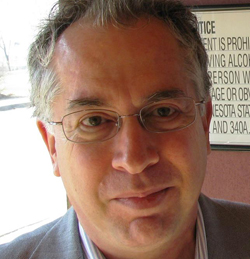 PUC approves Sandpiper
PUC approves Sandpiper
In early June, the Minnesota Public
Utilities Commission (PUC) granted Enbridge, Inc. (enbridge.com) a
certificate of need to build the Sandpiper pipeline from the Bakken
oil patch in No. Dakota to Superior, Wisc.
Enbridge, based in Calgary, Alberta,
still face many months of deliberations over the path of the
pipeline. As I reported in this column last November, the PUC
previously decided that six pipeline routes should be considered for
Sandpiper — alternatives to the preferred Enbridge route. The route
of Sandpiper purposely skirted reservation land; however, it would
still run through the 1854 Treaty Ceded Territory, where members of
Ojibwe bands have retained their rights to hunt, fish and gather.
So, Ojibwe bands in Minnesota (White
Earth and Fond du Lac) have expressed concerns about the
environmental threat posed by Sandpiper, as has Honor the Earth, a
group founded, in 1993, by Winona LaDuke, and Amy Ray and Emily
Saliers, of the Indigo Girls.
I watched some of the live webcast of
the PUC’s Sandpiper hearing last month; and my heart goes out to
the environmental activists who have to sit through such deadly dull
proceedings. Like Winona.
“Fracked oil from the Bakken poses a
serious risk to the North Country — particularly in light of the…
800,000 gallon oil spill in a remote area of North Dakota [in 2013],”
Honor the Earth notes on its website (honorearth.org). “That spill,
on a six-inch Tesoro line, went unmitigated for almost a week due to
an understaffed Pipeline and Hazardous Materials Safety
Administration (PHMSA), and all figures presently released come from
Tesoro, the owner of the pipeline. The Sandpiper would carry that
same oil, which has proven to be very volatile. In northern Minnesota
a lot of our towns are 15-20 miles apart, with fire departments and
rescue squads being even further apart. Response times are not quick
and sometimes oil spills go days before discovered.”
The Tessoro pipeline was carrying
Bakken oil to the Stampede rail facility near Columbus, No. Dakota,
when it ruptured, according to a Reuters story, which noted that a
“farmer harvesting wheat discovered oil spouting from the line,”
on Sept. 29, 2013.
Like Texas-based Tessoro, Enbridge has
had its share of pipeline failures, notably the 2010 Kalamazoo River
spill. An Enbridge pipeline burst and spewed some 1.1 million gallons
of heavy crude oil into surface waters — the largest inland oil
spill in U.S. history. The spilling took place for 18 hours before a
Michigan utilities employee alerted Enbridge about the unfolding
environmental disaster.
In my Nov. 2014 column — about PUC
action on Sandpiper, the Line 3 pipeline expansion and oil pipelines
running through the Fond du Lac reservation — I quoted Rick Gitar,
the Fond du Lac band’s water regulatory specialist. Among other
things, Gitar mentioned that Enbridge has pipelines that run under a
lake on the Leech Lake reservation. He told me that an emergency
drill was held to practice containing an oil spill in the lake.
“Enbridge just totally failed that
exercise,” Gitar recalled.
If the Sandpiper oil pipeline is built
and it fails, readers of “Political Matters” can refer back to
Enbridge’s 2013 Operational Reliability Report, which notes that
the company’s role in the oil business “comes with tremendous
responsibility. That’s why safety and operational reliability is
our Number 1 priority. It has to be, and it always will be. Because
safely and reliably delivering the energy you count on means
identifying and addressing problems before they occur, and being
vigilant, disciplined and prepared. That’s why we continue to
invest billions of dollars and why our team devotes hundreds of
thousands of hours of effort every year to keep our systems running
smoothly and without incident.”
Like the Enbridge system that befouled
the Kalamazoo River.
The pipeline company’s website
describes the Sandpiper project as including a 30-inch diameter
pipeline from Clearbrook, Minn., to Superior, Wisc. The entire
pipeline — from Tioga, in the northwestern corner of No. Dakota, to
Superior — will span 616 miles.
Enbridge’s Sandpiper project — a
partnership with a subsidiary of Marathon Petroleum Corp.
(marathonoil.com) — totals $2.6 billion in “privately funded
investment in new energy infrastructure,” according to the company,
which adds, “By comparison, the new Minnesota Vikings’ stadium
will cost approximately $1.2 billion.”
On this point, it occurs to me that
the Vikings might have another lousy season when they move into their
new downtown Minneapolis stadium. The runners might fumble and the
defense could give up a lot of points; but they likely won’t
pollute the Mississippi River.





